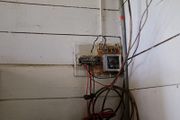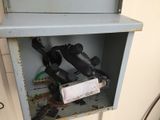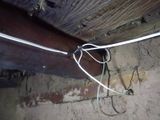Principles of installation
Jump to navigation
Jump to search
There are certain important principles that apply to the design and installation of an electrical system regardless of where it is being installed. These core principles are embedded in the electrical codes of every country as they are vital to ensuring user safety, preventing fires, and ensuring that a system functions properly. They will be presented here as general principles with the hope that they may serve as a reminder during system installation. Nonetheless, it is still necessary to check the electrical code for the country on the proper practices for the specific situation or materials under consideration.
- All system equipment should be protected from unauthorized access to prevent children and anyone who lacks sufficient understanding of the system from accessing live equipment or improperly operating the system.
- All components of a PV system should be installed in accordance with the specifications supplied by the manufacturer, their weather rating and certifications. Improper installation of equipment is one of the primary causes of safety and performance issues with PV systems.
- All equipment should be installed with proper clearances to ensure adequate ventilation and safe operation.
- All equipment should be installed and secured in a manner that will ensure that it will not be damaged under normal conditions in the location where it is installed. This includes protection from users, animals and the weather.
- All uninsulated current carrying components of a system (busbars, connections, overcurrent protection device) should be appropriately protected from accidental contact inside an enclosure.
- All connections, screws or bolts should be properly tightened. Every connection or fastener will have specifications for how tight is appropriate. If lacking appropriate tools for measuring the tightness of fasteners - like a torque wrench or screwdriver - it is ideal to attempt to gain this knowledge from another person or by using these tools in a training context. Connections that are too loose can create resistance, heat and ultimately cause a fire. Connections that are too tight can damage equipment and create similar problems.
- All system equipment should be properly labeled to ensure safety and assist users in the future.
- All wiring should be installed using best practices for wiring.



